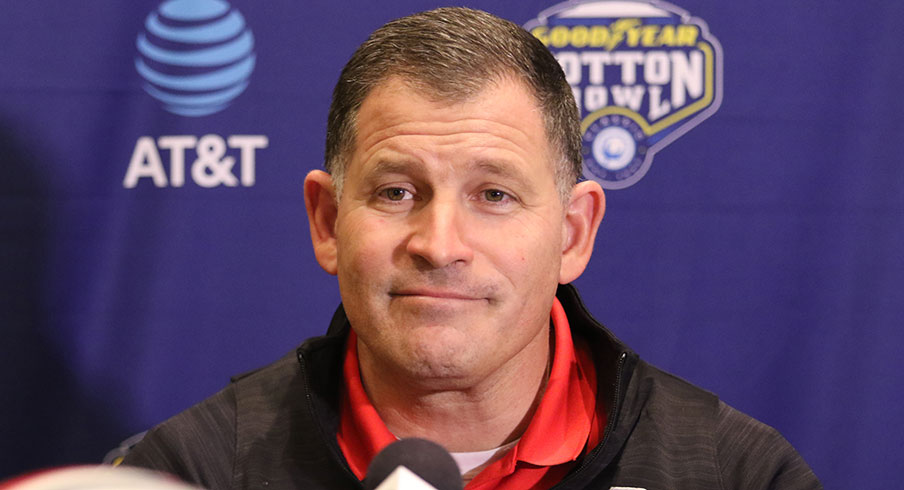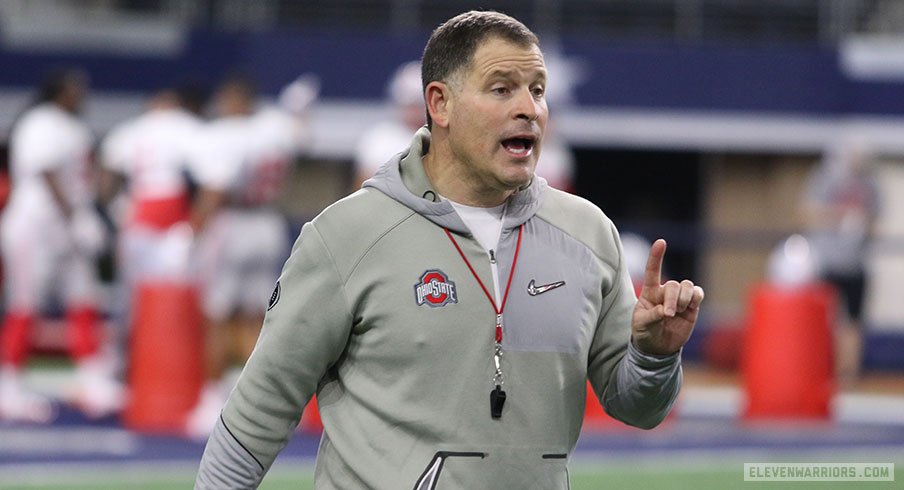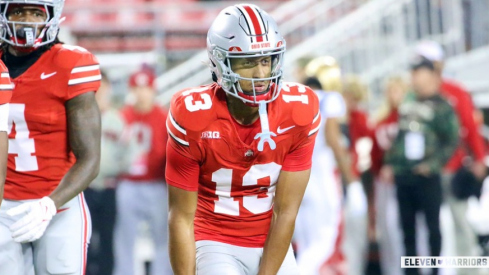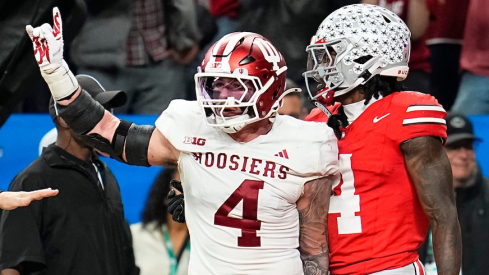Not only has Ohio State spent the last month preparing for Friday Night's Cotton Bowl against USC, but the staff also spent a considerable amount of time on the recruiting trail. Thanks to college football's first Early Signing Period — which ran from Dec. 20-22 — the Buckeyes were tasked with balancing their recruiting efforts and bowl preparation, hoping one didn't negatively impact the other.
“It was harder than it’s ever been, and I’ve been doing this for 30 years,” defensive coordinator Greg Schiano told reporters during his Cotton Bowl media availability on Wednesday. “The period leading up to this bowl game has been the hardest to juggle everything, but you can’t sacrifice [preparation for the game] and you can’t sacrifice recruiting, so you choose not to sleep, I guess.
“you can't sacrifice [preparation for the game] and you can't sacrifice recruiting, so you choose not to sleep, i guess.”– Greg Schiano
“You had to really be as efficient as you've ever been at your preparation in both areas,” he continued. “It was a group of guys that went really hard, and we're going on adrenaline right now. When when this game's over, I'm sure everyone's going to need to take a little nap.”
Ohio State signed 21 players last week, all of whom combined make up the country's second-ranked recruiting class. And while the Buckeyes hope to address a few glaring needs at the offensive tackle and defensive end positions by the traditional National Signing Day in February, there isn't a whole lot of room left on the roster to do so.
In fact, head coach Urban Meyer said on Thursday Ohio State might only have two spots left in the class — that of course depends on how many players declare for the NFL Draft next month. That's something the staff can't necessarily predict ahead of the Early Signing Period, and that makes it even more difficult to acquire top talent since most elite prospects have already signed on the dotted line.
“Well, that’s the tricky part, there is no doubt about it,” Schiano said. “Coach [Urban] Meyer handles that as the head coach. We try to help him with that by communicating with your players. It’s their future, it’s their life. Let’s sit down and talk about it. You know, as a coach, there’s plenty of agents in their ear, so you better be in their ear and not necessarily to keep them from going, but to help them make the best decision for them and for their family.
"We try to openly converse with our players about it," he continued. "It’s not like we walk around here on egg shells. And then you have to make your best guesstimate. But it’s one of the things that really hasn’t been thought through all the way, and it puts the head coach and the institution in a tricky spot. Do you want to be aggressive? Well, if you’re aggressive, and say ‘Well, this guy probably will leave,’ and he doesn’t, then what do you do?”
A seemingly unintended consequence of the Early Signing Period was a wild coaching carousel that saw nearly a dozen Power 5 programs either fired or watched as their coach took another job, every one of them hoping to hold onto their committed prospects and/or land their top remaining targets.
Schiano was in the middle of it, too, as he was reportedly set to become the next head coach at Tennessee in late November until the Volunteers backed out of the deal just a few short hours later amid protests on campus and social media posts questioning Schiano's past as an assistant at Penn State. And while he doesn't feel it's the appropriate time to discuss how things unraveled in Knoxville, Schiano did — at the very least — admit the Early Signing Period rushed the process.
“When this was all being talked about, some of the talk was to have an Early Signing Period before the season. How would that have changed things,” Schiano asked. “All those scenarios, until you go through them, you really don't know. No. 1, there's things that nobody thought about. To no fault of anybody's, there's just so many little things that can come up. And you don't know how it's going to have an effect in real time, so we're going to figure that out as we go.”
With that said, college football's various legislative committees — the American Football Coaches Association, the NCAA Division I Council and the Collegiate Commissioners Association, to name a few — will be tasked with finding ways to improve the recruiting process this spring and into the summer.
It's certainly not perfect, and not every coach thinks it's good for the game. There is less time to build relationships with prospects and it forces teams like Ohio State to spend more time on the recruiting trail and less time with bowl preparation in arguably the most important time of the season.
Would an Early Signing Period before the season be more beneficial? What about after? Keep in mind, there was once a proposed June date that also faced heavy opposition from the various committees and was not included in the final legislation.

“I don't know the answer to that. I don't think anybody does,” Schiano said. “I think people are going to find out in time if it really works or not. I know that we have almost the entire class signed, so January will be recruiting younger guys and doing our due diligence that way.
“I think everybody is learning as you go through something for the first cycle,” he continued. “Spring is going to be different with official visits. You're going to be able to visit young rising seniors in schools. That's all going to play out — and what happens with any legislative change — you're going to go through a fine-tuning stage, and we're probably in that now. You'll go through a cycle and I'm sure there'll be tweaks. You try to get what's best for the game of football. What's best for the game of football, to me, is always what's best for the young people. It doesn't have anything to do with the coaches or the university. It has to do with the players. We need to figure out what's best for young people, and I'm not sure this is best. We need to figure that out.”


